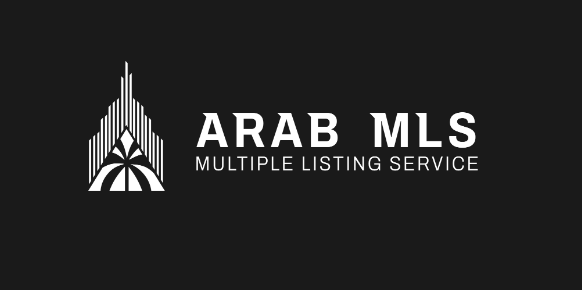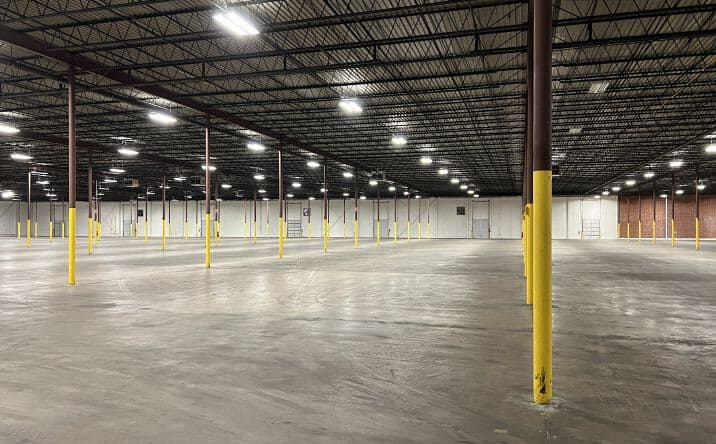The real estate industry is going through a digital revolution, and at the heart of this transformation lies the Multiple Listing Service (MLS). Traditionally used by brokers and agents to share property information, MLS platforms are now being reimagined for a mobile-first world. As smartphones become the primary tool for browsing and buying properties, especially in fast-growing Arab markets, developing mobile-first MLS applications is no longer an option—it’s a necessity.
This article explores the importance of mobile-first design in MLS platforms, how it impacts user experience, and the practical steps to develop effective mobile MLS apps that meet the expectations of today’s real estate users.
Why Mobile-First MLS Matters

The shift from desktop to mobile is not just a passing trend; it’s a fundamental change in how people interact with digital platforms. Today, most users browse the internet on their phones. Whether searching for apartments, homes, office spaces, or investment properties, people want the convenience of accessing listings from anywhere, at any time.
In Arab countries, mobile usage is particularly strong. Markets like Saudi Arabia, the United Arab Emirates, and Egypt have some of the highest smartphone penetration rates in the world. With a young, tech-savvy population and increasing urbanization, mobile-first real estate browsing is fast becoming the norm.
If MLS platforms are not optimized for mobile, they risk losing users to more agile, app-based competitors. That’s why creating a seamless, mobile-first experience is essential for real estate platforms looking to grow and retain their audience.
Understanding Mobile-First Design
Mobile-first design means developing the platform with smartphones and tablets as the primary devices, rather than designing for desktop first and trying to adapt it for mobile later. This approach puts mobile users at the center of the development process, ensuring faster load times, simpler navigation, and interfaces that are easy to use on smaller screens.
The goal is to create an intuitive and engaging experience tailored to how people interact with mobile apps—using their thumbs, expecting quick results, and avoiding unnecessary complexity.
Key Features of a Mobile-First MLS Application
A successful mobile-first MLS application needs to include several core features that enhance usability and make the property search process as smooth as possible. These features also help differentiate the app from competitors and align it with regional user expectations.
Responsive and Fast UI
Users should be able to scroll, swipe, zoom, and tap without delays. Every touchpoint must respond quickly, and the interface should adjust automatically to different screen sizes.
Smart Search and Filters
Search functionality must be precise and customizable. Filters for location, price, number of bedrooms, property type, furnishing status, and amenities are essential. Voice-enabled search and AI suggestions based on user behavior can also improve usability.
High-Quality Media
Images and videos must be optimized for mobile screens without compromising quality. Including virtual tours, 360-degree views, or even augmented reality previews can greatly enhance the visual experience.
Location Integration
GPS integration allows users to find properties near them or within specific areas. Location-based alerts can notify users of new listings that match their criteria in real time.
Saved Listings and Preferences
Users should be able to save favorite properties, set alerts, and revisit their search history. These features personalize the experience and encourage continued engagement with the app.
Agent Communication Tools
In-app messaging, video calls, or quick contact buttons let users connect directly with agents. This direct communication simplifies inquiries and accelerates the decision-making process.
Multi-Language Support
In Arab countries, offering the app in Arabic and English is critical. Multilingual support ensures inclusivity and wider adoption.
Secure Account Management
Users must be able to register, log in, and manage their profiles securely. Features like biometric login, encrypted data storage, and secure payment gateways (for deposits or booking) improve trust.
Benefits of Mobile-First MLS Platforms
The benefits of a mobile-first MLS strategy go beyond user satisfaction. They offer competitive advantages and long-term value for real estate businesses and app developers alike.
Improved User Engagement
When users can navigate a platform easily, they spend more time exploring listings. This leads to increased engagement, higher conversion rates, and better retention.
Broader Reach
Mobile-first design makes the platform accessible to a wider audience, including users who may not have access to desktops or prefer mobile browsing on the go.
Better SEO and App Store Rankings
Search engines and app stores reward platforms that load quickly and perform well on mobile. A mobile-first MLS app is more likely to rank higher, increasing visibility and attracting more users.
Streamlined Lead Generation
Integrated lead capture forms, direct call options, and instant messaging increase the likelihood that users will take action after viewing a property.
Data Insights
Mobile apps generate valuable data on user behavior. Developers and real estate agencies can use this data to improve listings, adjust marketing strategies, and offer targeted property recommendations.
Challenges in Developing Mobile-First MLS Apps
While the benefits are clear, developing a mobile-first MLS application comes with its own set of challenges. Understanding these challenges can help developers and real estate businesses prepare accordingly.
Device and OS Compatibility
The app must function smoothly across different operating systems (Android, iOS) and various devices. This requires extensive testing and optimization.
Performance Optimization
High-resolution images, videos, and 3D models can slow down performance if not optimized properly. Developers need to balance quality and speed carefully.
Data Accuracy and Updates
MLS data must be updated in real time. If listings are outdated or inaccurate, users lose trust in the platform. This requires reliable backend integration with MLS databases and brokerage feeds.
Regulatory Compliance
In many Arab countries, real estate platforms must comply with specific laws regarding property advertising, data sharing, and financial transactions. Developers must ensure legal compliance for smooth operation.
Scalability
As more users join the platform, it must be able to handle increased traffic without crashes or delays. A scalable architecture is essential for long-term growth.
The Arab Real Estate Market: A Strong Fit for Mobile MLS
Mobile-first MLS platforms are especially relevant to the Arab world due to several regional dynamics. These include the widespread use of smartphones, a young population, high urbanization rates, and the growing interest in real estate investment.
In the UAE, for example, where nearly 100% of the population uses smartphones, mobile apps are the primary channel for real estate searches. Dubai’s property market, with its mix of local and international buyers, thrives on digital transparency and access.
Saudi Arabia’s Vision 2030 encourages digital transformation and homeownership. The growing middle class is turning to mobile platforms to find affordable homes, rental apartments, or investment opportunities in Riyadh, Jeddah, and Dammam.
Egypt, with its rapid expansion in cities like New Cairo and the New Administrative Capital, sees a rising number of property developers adopting mobile tools to reach younger buyers and diaspora investors abroad.
In North African markets like Morocco and Tunisia, mobile-first apps provide real estate access in rural areas or secondary cities where traditional brokerages are limited.
How to Build a Mobile-First MLS App: Step-by-Step
For developers or real estate companies planning to build a mobile-first MLS app, the following steps provide a simplified roadmap:
- Define the Core Objectives: Decide what the app must achieve—property search, agent discovery, virtual tours, document handling, or all of these features.
- Conduct Market Research: Understand the needs of your users in specific regions. What kind of properties are they searching for? What features do they expect?
- Choose the Right Tech Stack: Use modern frameworks like React Native or Flutter for cross-platform compatibility. Ensure secure database integration and real-time syncing with MLS data feeds.
- Design with Mobile in Mind: Use simple layouts, large touch targets, fast-loading media, and minimal text. Every screen should have a clear action—search, filter, view, or contact.
- Integrate Smart Features: Add tools like geolocation, virtual tours, in-app messaging, and personalized suggestions based on user behavior.
- Test Rigorously: Test the app on various devices and screen sizes. Check for bugs, performance issues, and usability problems.
- Launch and Collect Feedback: Release the app, collect user feedback, and update regularly based on real-world usage.
- Promote in Relevant Channels: Use digital marketing, partnerships with brokers, and app store optimization to reach users in your target market.
Future Trends for Mobile MLS Platforms
Mobile-first MLS apps will continue evolving, shaped by new technologies and user expectations. Some future trends include:
- AI-Powered Recommendations: Apps will learn from user behavior to suggest properties more accurately.
- Voice Search: Users will be able to say, “Show me three-bedroom apartments in Doha under 500,000 QAR,” and get immediate results.
- Augmented Reality Integration: AR features will let users project floor plans into their space or preview furniture placement.
- Document Handling: Buyers and renters will be able to submit documents, sign agreements, and make payments directly in the app.
- Green and Smart Listings: Eco-conscious users will want listings to show energy efficiency, smart home features, and sustainability ratings.
Conclusion
Developing mobile-first MLS applications is not just about following a tech trend—it’s about adapting to how people interact with the real estate market today. As mobile devices become the dominant tool for browsing, comparing, and buying properties, MLS platforms must prioritize mobile usability to stay competitive.
For real estate developers, brokers, and tech entrepreneurs in Arab countries, the opportunity is enormous. A well-designed, mobile-first MLS platform can improve user experience, increase engagement, and unlock new business opportunities in some of the world’s fastest-growing property markets.
Mobile-first isn’t just the future of MLS—it’s the present. The question is no longer whether to invest in mobile, but how fast you can build a seamless, intuitive, and powerful MLS app that users will love.













